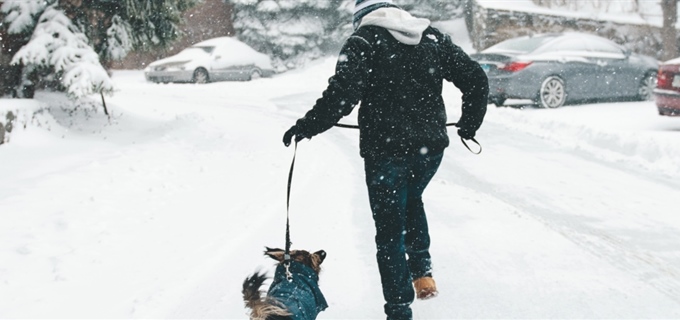Search for a doctor or hospital in your network.


Search for a doctor or hospital in your network.

Get News & Updates Directly To Your Inbox
Just 30 minutes of moderate activity most days of the week can make a big difference. And exercise doesn’t just help your body. It also helps you think more clearly, stay focused and improve your mood.
If you want to get some fresh air and sunshine this winter, try some of these ideas.
If you live in a snowy area, use it to your advantage:
There are some special considerations when you’re exercising in the cold weather. Here some things to keep in mind.
If you decide to brave the cold, check the forecast for the time you'll be outside. Temperature, wind and moisture, along with the length of time that you'll be outside, are key to planning a safe cold-weather workout.
Be sure to check the wind chill index in addition to the temperature. Wind chill extremes can make exercising outdoors unsafe even if you dress warmly. Any exposed skin is subject to frostbite. And the wind can penetrate your clothes and remove the insulating layer of warm air that surrounds your body. If it’s too cold and winds are high, choose an indoor activity instead.
People often overdress to exercise in cold weather. Exercise generates a considerable amount of heat — enough to make you feel like it's much warmer than it really is.
The evaporation of sweat, however, can make you lose heat from your body and feel chilled. Some stop-and-go activities, such as mixing walking with running, can make you more vulnerable to the cold if you repeatedly work up a sweat and then get chilly.
So how should you dress to combat the cold? Dress in layers that you can take off when you start to sweat and then put back on as needed.
Start with a thin layer of synthetic material, like a wicking material, which draws sweat away from your body. Avoid cotton, which stays wet next to your skin. Jackets and tops with zippers can allow for more airflow and venting as you start to heat up.
Next, add a layer of fleece or wool for insulation. Top this with a waterproof, breathable outer layer. Find a combination of clothing that works well for you.
Does your body need as much water when the temperature drops? Yes. Your body loses water during cold weather the same way it does in warm weather — through regular bodily functions like breathing, urinating and sweating. And staying hydrated can help your body maintain a safe temperature when you’re out in the cold.
Are you getting enough water? Check the color of your urine. Light yellow or clear urine means you are well hydrated. Darker yellow urine indicates the need for more liquids.
If you frequently feel thirsty, have a dry mouth, are having trouble focusing, are light-headed, feel tired and have dry skin, you may need to drink more fluids.
Keep in mind that intense exercise like hockey, sledding, skiing and snow shoeing are as strenuous as hot weather activities, so take breaks to hydrate.
Almost everyone can exercise safely during cold weather. But if you have certain conditions, such as asthma, heart problems or Raynaud's disease, ![]() check with your doctor before you work out in cold weather.
check with your doctor before you work out in cold weather.
And if you’re starting to exercise for the first time in a while, talk with your doctor to make sure you’re healthy enough.
Originally published 1/20/2016; Revised 2021, 2024
Blue Cross and Blue Shield of Texas, a Division of Health Care Service Corporation,
a Mutual Legal Reserve Company, an Independent Licensee of the Blue Cross and Blue Shield Association
© Copyright 2025 Health Care Service Corporation. All Rights Reserved.
Verint is an operating division of Verint Americas, Inc., an independent company that provides and hosts an online community platform for blogging and access to social media for Blue Cross and Blue Shield of Texas.
![]() File is in portable document format (PDF). To view this file, you may need to install a PDF reader program. Most PDF readers are a free download. One option is Adobe® Reader® which has a built-in screen reader. Other Adobe accessibility tools and information can be downloaded at https://www.adobe.com/trust/accessibility.html.
File is in portable document format (PDF). To view this file, you may need to install a PDF reader program. Most PDF readers are a free download. One option is Adobe® Reader® which has a built-in screen reader. Other Adobe accessibility tools and information can be downloaded at https://www.adobe.com/trust/accessibility.html. ![]()
![]() You are leaving this website/app ("site"). This new site may be offered by a vendor or an independent third party. The site may also contain non-Medicare related information. Some sites may require you to agree to their terms of use and privacy policy.
You are leaving this website/app ("site"). This new site may be offered by a vendor or an independent third party. The site may also contain non-Medicare related information. Some sites may require you to agree to their terms of use and privacy policy.
Powered by Verint